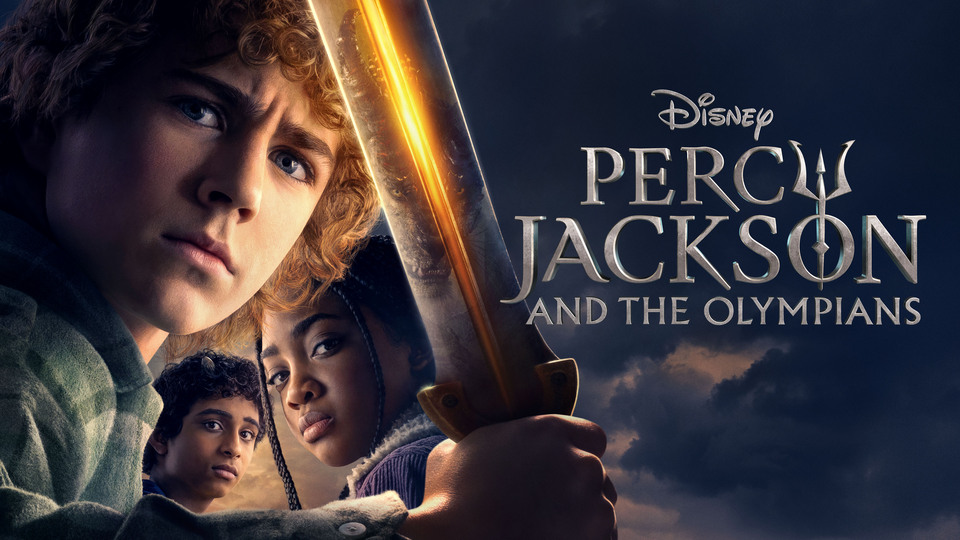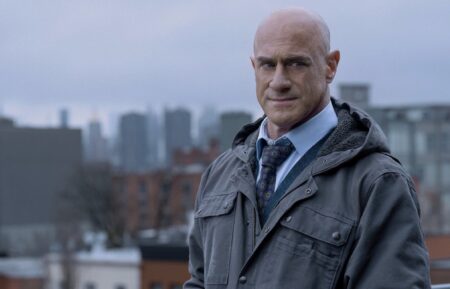‘Percy Jackson’: Walker Scobell Spent Hours in Underwater Training for St. Louis Arch Scene
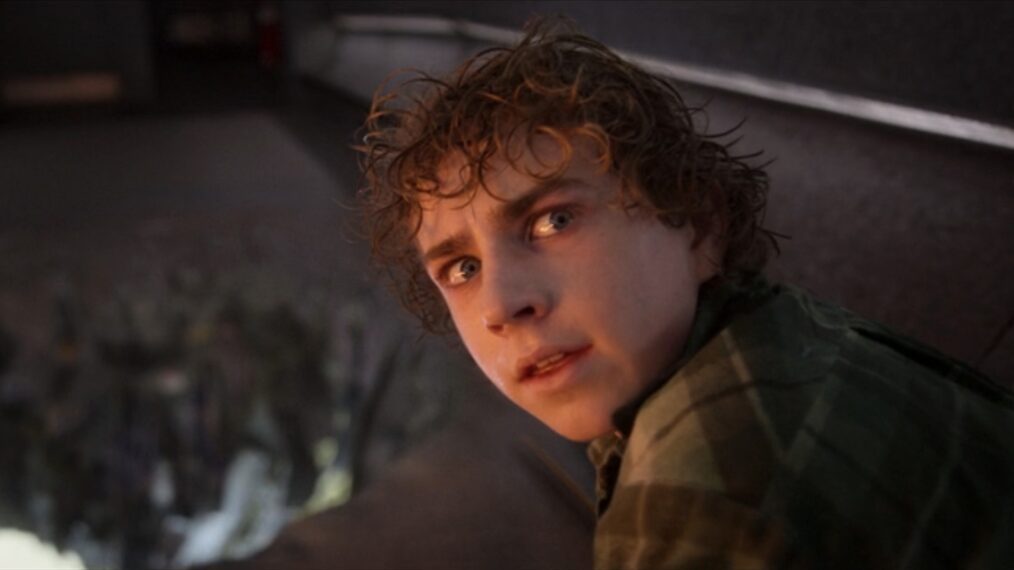
Spoiler Alert
[Warning: The following contains MAJOR spoilers for Percy Jackson and the Olympians Season 1 Episode 4, “I Plunge to My Death.”]
Don’t let the episode title fool you.
Walker Scobell‘s Percy Jackson does not die in Percy Jackson and the Olympians Episode 4, but the demigod is in the most danger he’s faced so far in the newest installment, streaming now on Disney+. The episode gets its title from Chapter 13 of The Lightning Thief and is one of the major book scenes that fans cite as an unforgivable exclusion from the 2010 film.
Bringing the Percy Jackson St. Louis Arch scene to the screen was an important moment for the series. Showrunners and executive producers Jonathan E. Steinberg and Dan Shotz tell TV Insider it was created with as many practical effects as possible, and Scobell spent hours in underwater training to help make that happen.
The episode begins with a flashback scene to Percy’s childhood, bringing Young Percy (Azriel Dalman) and Sally Jackson (Virginia Kull) back to the screen. In it, the young Percy is in a swim lesson but is too scared to tread into the open water with his mom. The memory comes to the 12-year-old Percy in a dream while he’s sleeping on a train across the country on his journey to Los Angeles, where the trio will find the entrance to Hades’ Underworld domain. Percy, Annabeth (Leah Sava Jeffries), and Grover (Aryan Simhadri) are on a quest to retrieve Zeus’s stolen lightning bolt from the Underworld, and they’re hoping to save Sally while they’re down there. But that all depends on them actually making it to L.A. before the summer solstice.
They made it past Trenton, New Jersey, after defeating Medusa (Jessica Parker Kennedy) in Episode 3, but their travel is cut short again in St. Louis when the mother of all monsters, Echidna (Suzanne Cryer), attacks them with the fire-breathing Chimera on their train and chases them into the city.
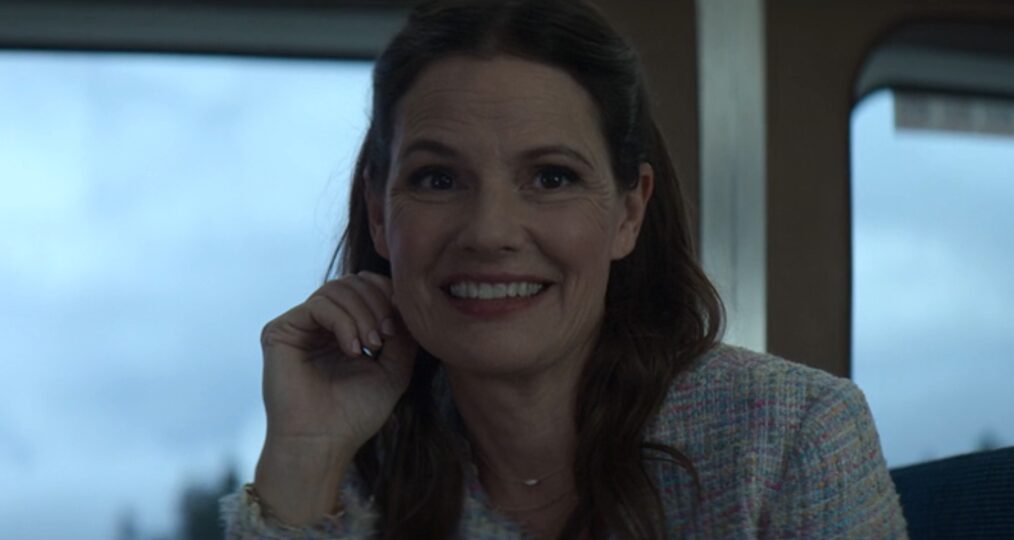
Suzanne Cryer as Echidna in Percy Jackson and the Olympians Season 1 Episode 4 (Disney+)
Episode 3 revealed key parts of Grover and Annabeth’s backstories and their connections to Medusa, whose mythological tale was modernized for this series. Like in the Greek myth, Medusa’s curse was brought on by Athena, who punished the woman for the actions of Poseidon, Percy’s father. It was an unjust punishment, which challenged Annabeth’s view of her mother, whom she believed to be benevolent and wise. In the current timeline, Grover learns that his Uncle Ferdinand has fallen victim to Medusa’s stare.
With Annabeth and Grover’s help, Percy was able to cut off Medusa’s head. The “impertinent” demigod shipped the head to Mt. Olympus to send a message to the Olympians, and in a slight parallel to Medusa’s tale, Annabeth is punished for Percy’s decision in Episode 4 by her mother. When Percy is stung by the Chimera and falls ill, they hope Athena will help them in the St. Louis Arch, which their Olympian world knows to be a temple to the goddess. But as the insidious Echidna telepathically communicates to Annabeth, Athena is embarrassed by Percy’s offering and refuses to send her daughter and her friends any help. The teens are left to fend for themselves, and without easy access to a natural water source to heal Percy’s wound, time is of dire essence. (Episode 2 revealed that Percy’s wounds can be healed by water, as he’s the son of the sea god.)
Percy is convinced he’s going to die from the Chimera sting, so when Echidna and her monstrous child catch them at the very top of the arch’s interior, he tricks Annabeth into letting him fight the beast on his own so she and Grover can escape, continue the quest, and stop an Olympian war in its tracks. Percy wields his magic sword, Riptide, against the monster but quickly loses the fight. A hole is burned into the arch’s floor, and just like in the book, Percy falls through it. The Olympians can use their power to send help to their demigod children from Olympus, but Percy doubts his dad will save him. But help does, indeed, arrive as Percy plummets from the arch. The Mississippi River below shoots up to catch him, landing him safely underwater. From there, a magical spirit sent by his father appears, telling Percy that Poseidon has always struggled with having to stay away from his son. It’s at this moment that Percy learns he can breathe underwater.
All demigods are powerful, but the “forbidden children” of the Big Three Olympians — Zeus, Poseidon, and Hades — are the most powerful of their kind. Their abilities pose a threat to their godly parents, which is why Zeus forbade himself and his brothers from fathering more children and why mythological monsters will always hunt them down. Percy’s ability to breathe underwater is an example of the unique power forbidden children possess.
Percy Jackson was mostly filmed in Vancouver. Everything you see in the Percy-Chimera fight at the top of the St. Louis Arch was a set built on the Volume stage, but Scobell really did fall from a great height as part of the stunt.
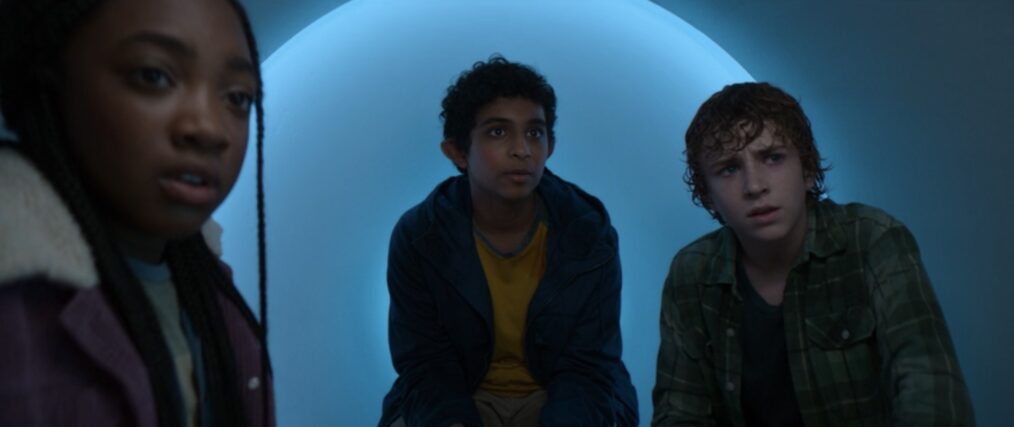
Annabeth, Grover, and Percy make their way to the top of the St. Louis Arch as Echidna and the Chimera trailer behind in Percy Jackson and the Olympians Season 1 Episode 4 (Disney+)
“We built that entire structure that was inside [the arch],” Shotz says, “and then where [Percy] was falling out of it, we had to build that structure, I think, like seven or eight feet above the ground — even more than that, I think. It was probably 10 or 12 feet above the ground so that we could do that stunt where he descends from it, and Walker did it all himself.”
The 14-year-old star performed as much of his own stunts as possible, as did the rest of the teen cast, and their stunt and fight choreography skills are on display in the Capture the Flag scene in Episode 2 and the monster battles in Episodes 1 and 3. When Percy is underwater in Episode 4, those are also mostly practical effects.
“All things being equal, we wanted to be able to do the underwater work underwater and not ask visual effects to try to replicate that,” says Steinberg. “And we got very lucky in that we had a kid who was very happy to sit at the bottom of a swimming pool for as many hours as it took to learn how to give a performance down there, to be trained to get comfortable down there. [Scobell] was such a gamer, and it allowed us to do those scenes in a way where you feel like you’re in that environment. You don’t feel like you’re looking at a computer-generated version of it.”
Percy Jackson and the Olympians, Tuesdays, 9/8c, Disney+

